Our Studios
Acoustically treated studios for recordings, post-production suites for audio and video editing and a battery of DTP workstations, we have the space and the tools to process many different projects at a time, no matter how complex, multi-lingual or multi-platform they are.
From our headquarters in France we are expanding globally with a new audio studio and DTP facility in Ecuador, South America as well as partner studios in Eastern Europe and the Far East.
Our sound studios are our greatest technical asset!
When you hear our recordings, you will understand why we are so proud.
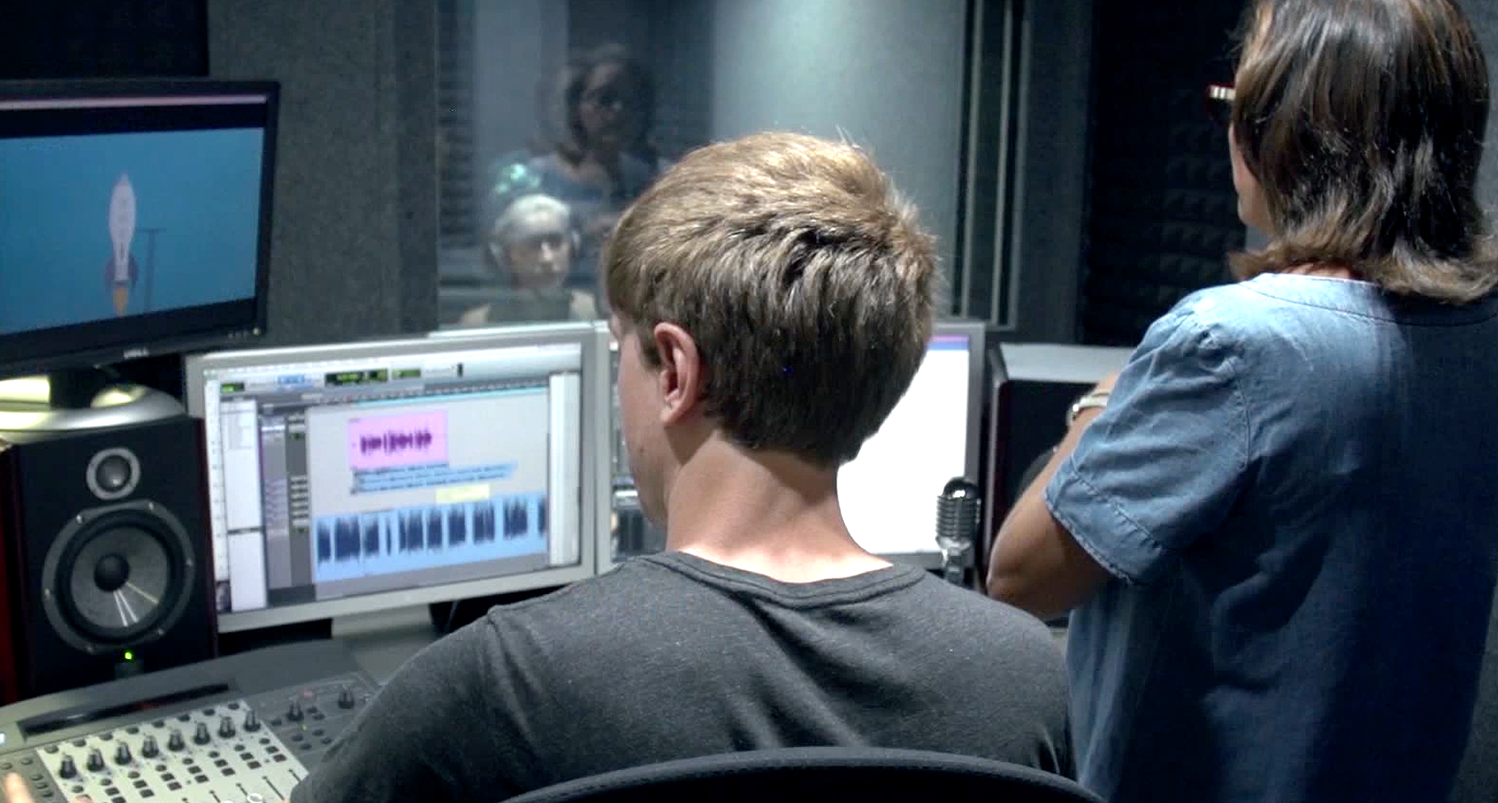
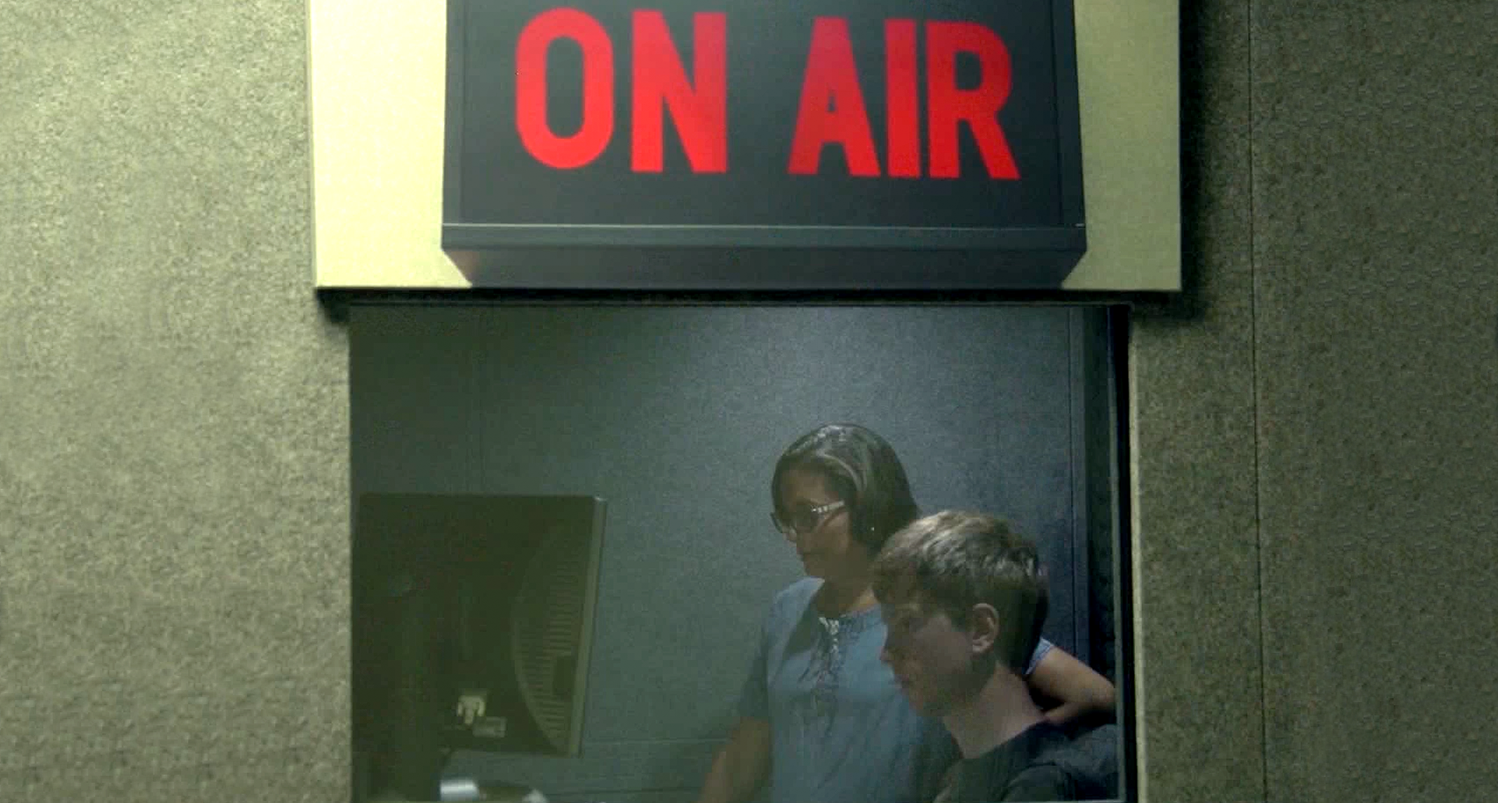
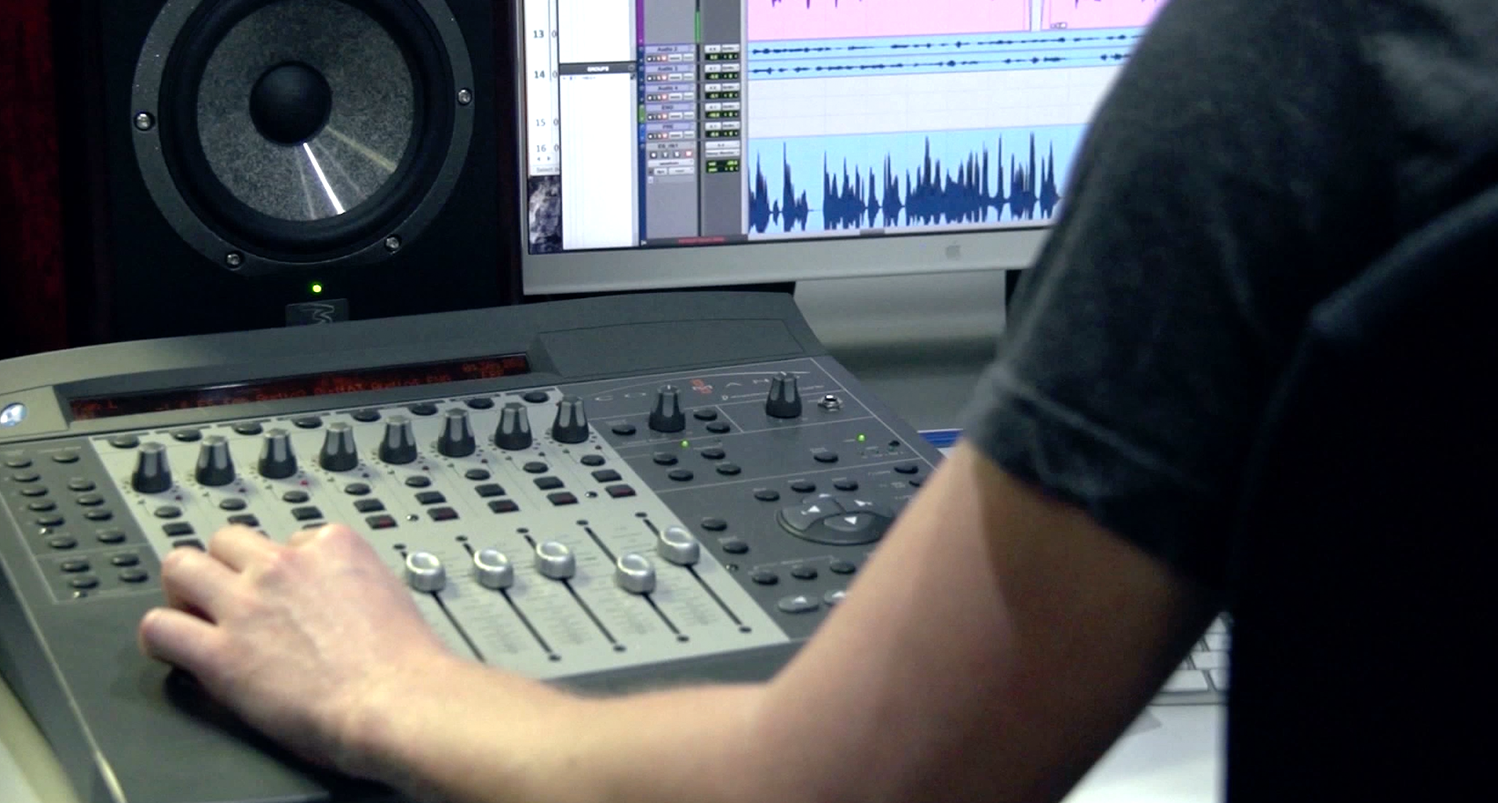
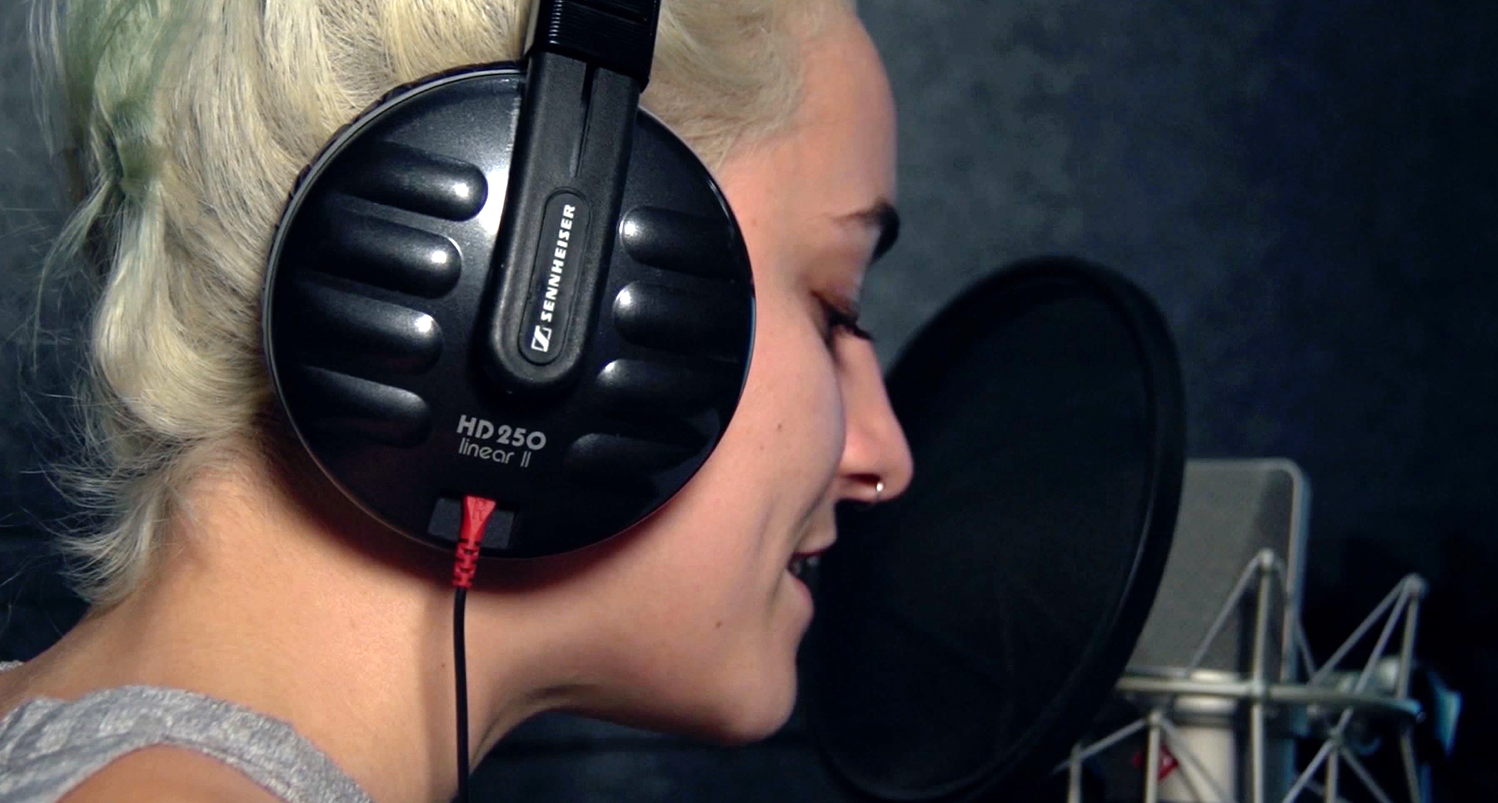
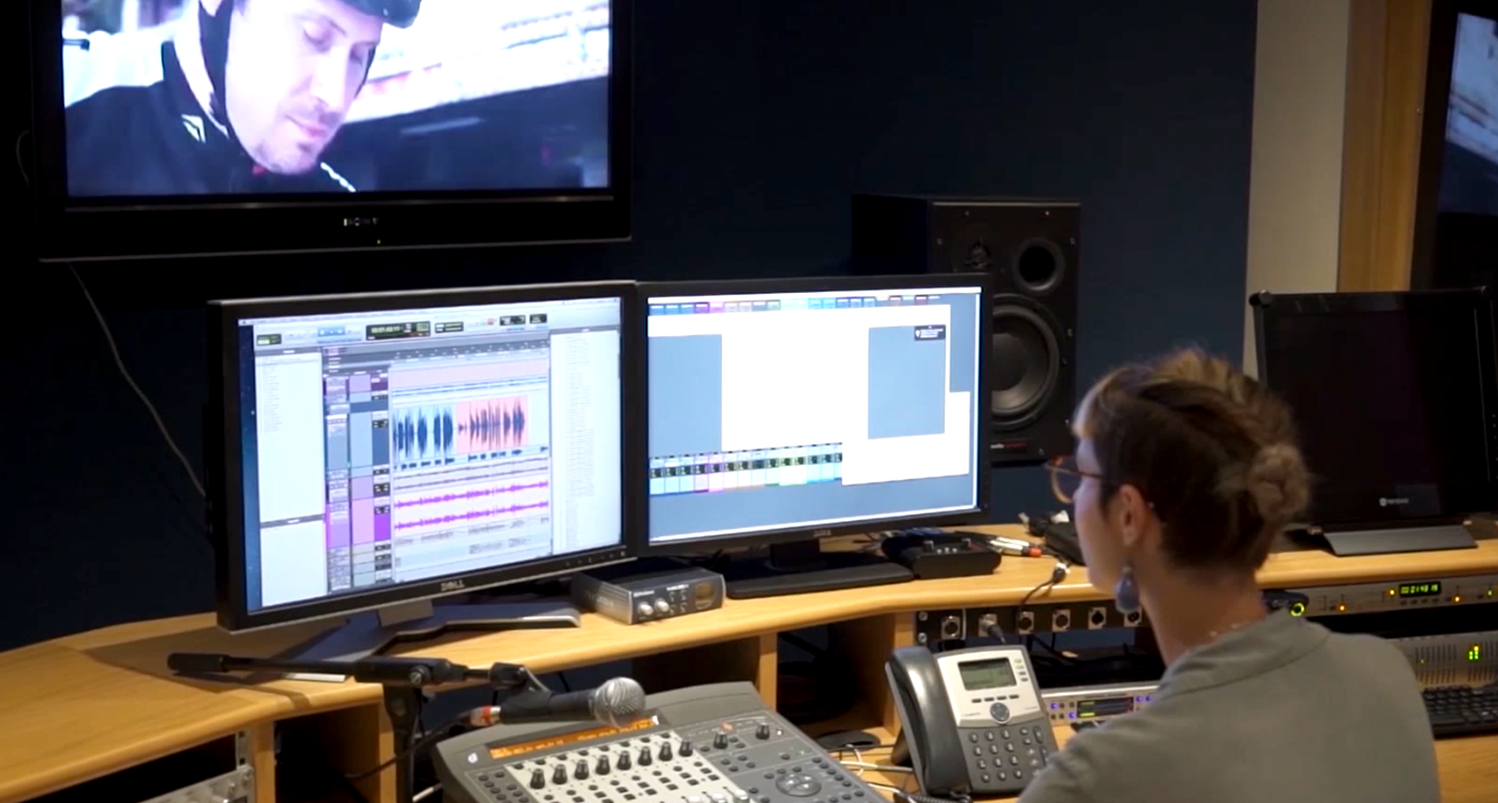
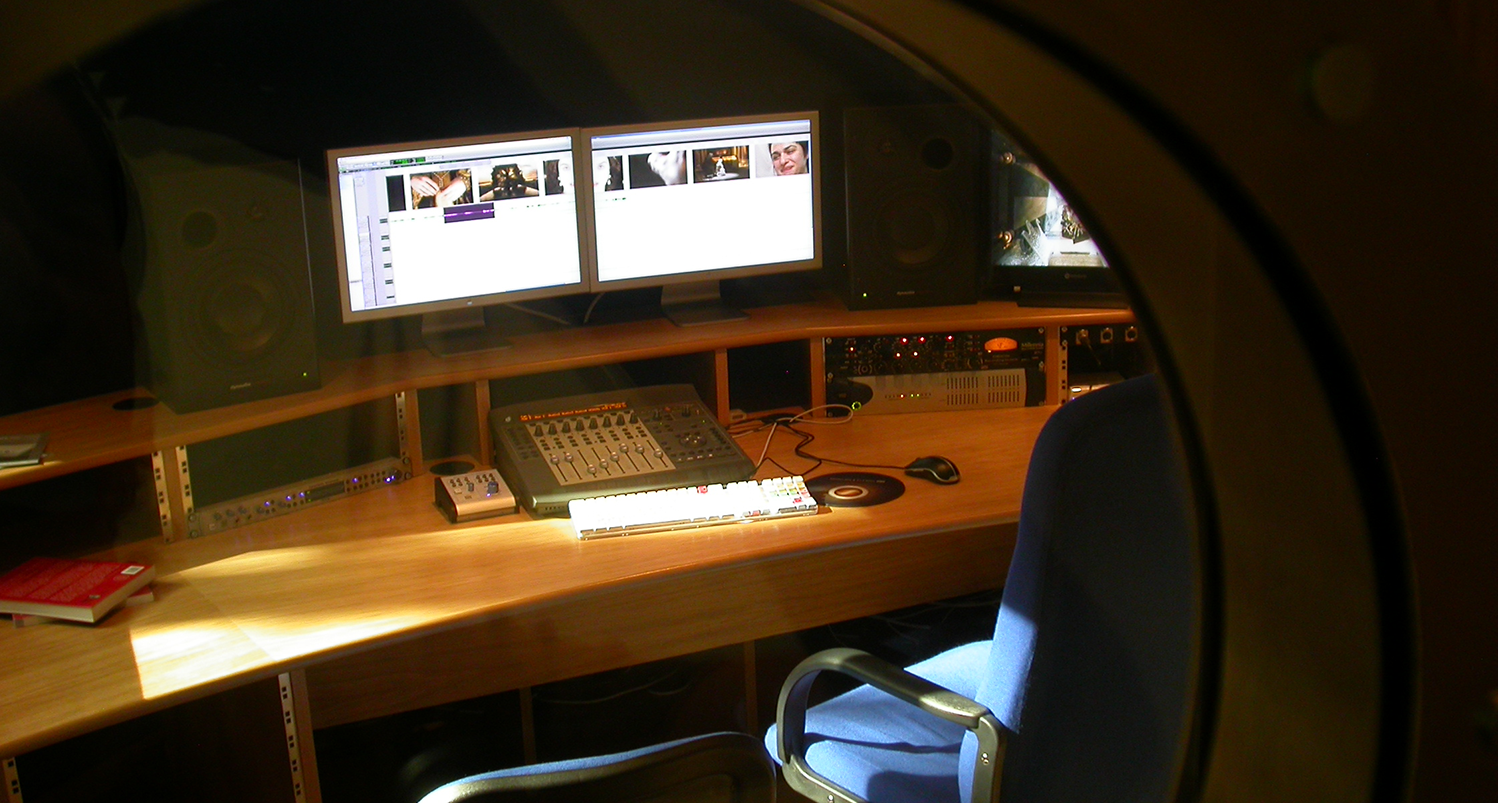
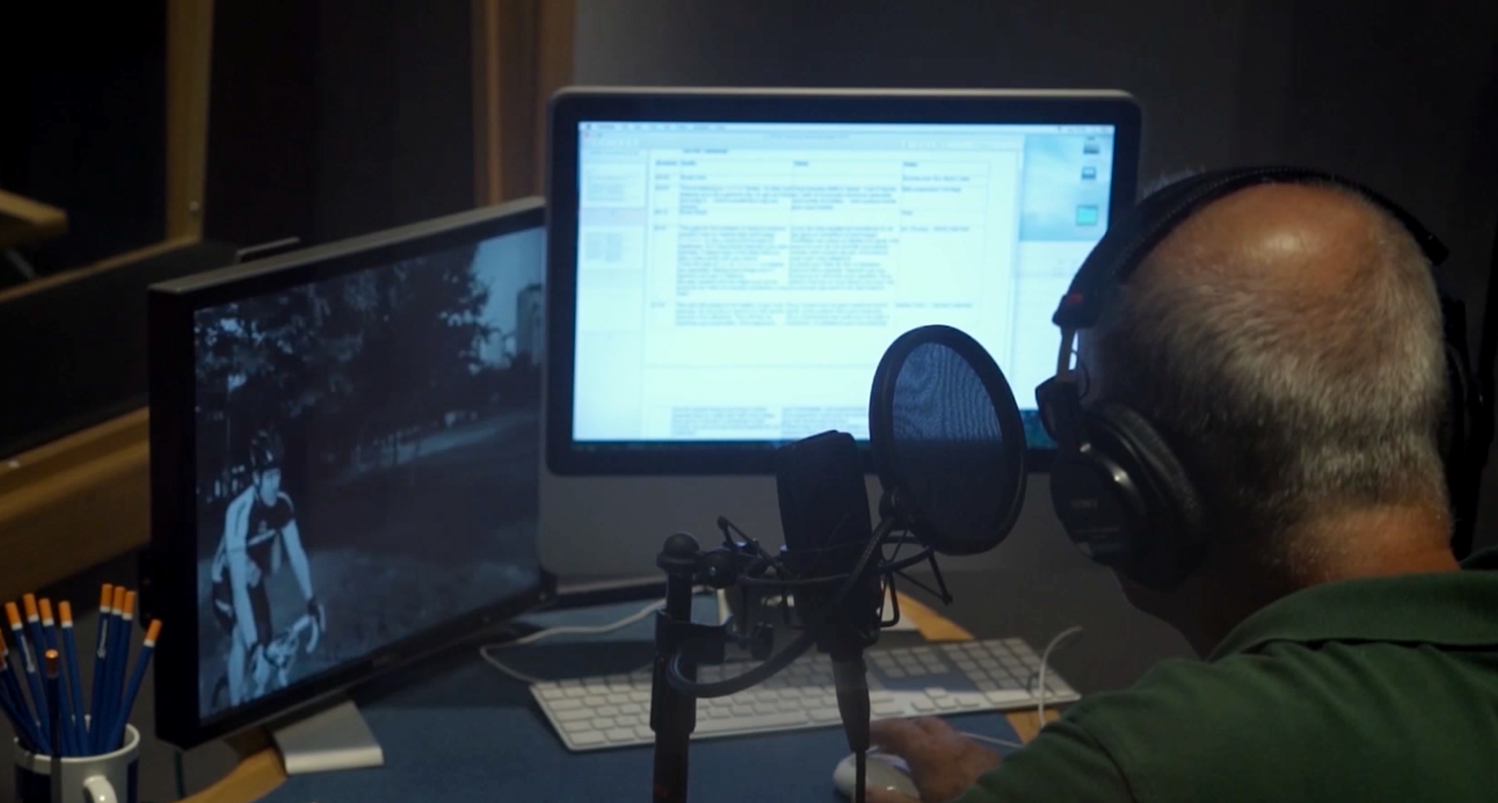
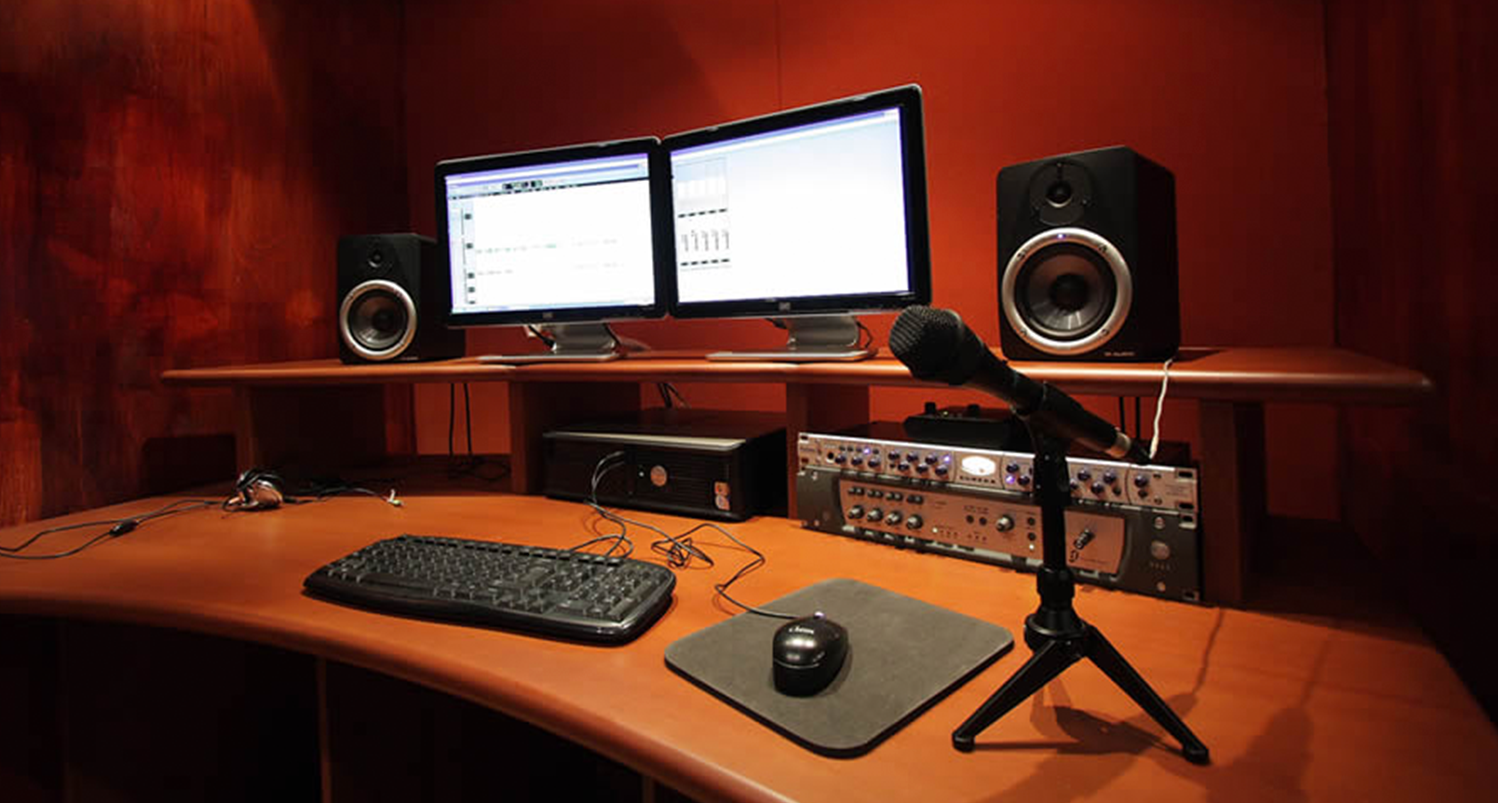
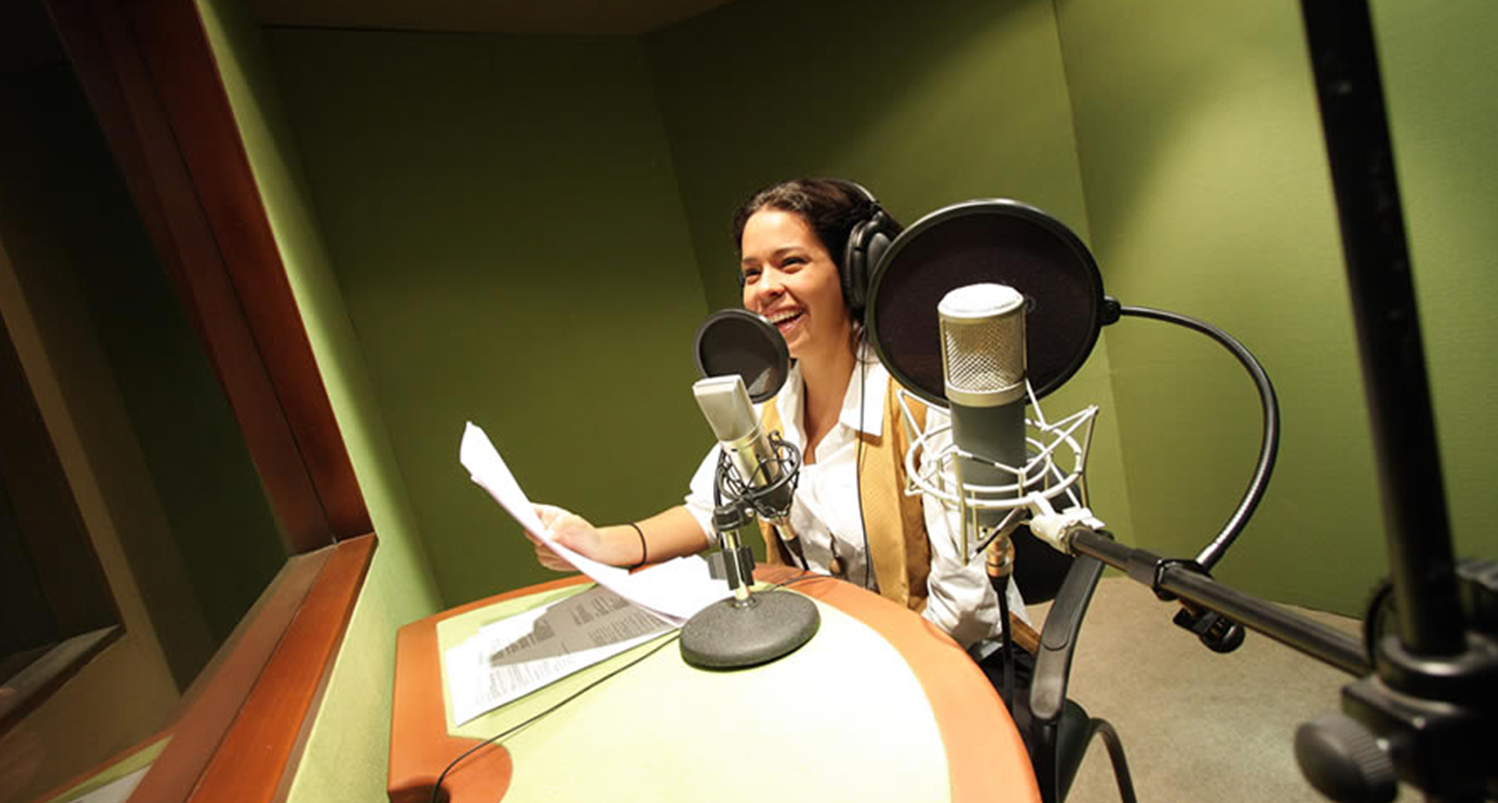
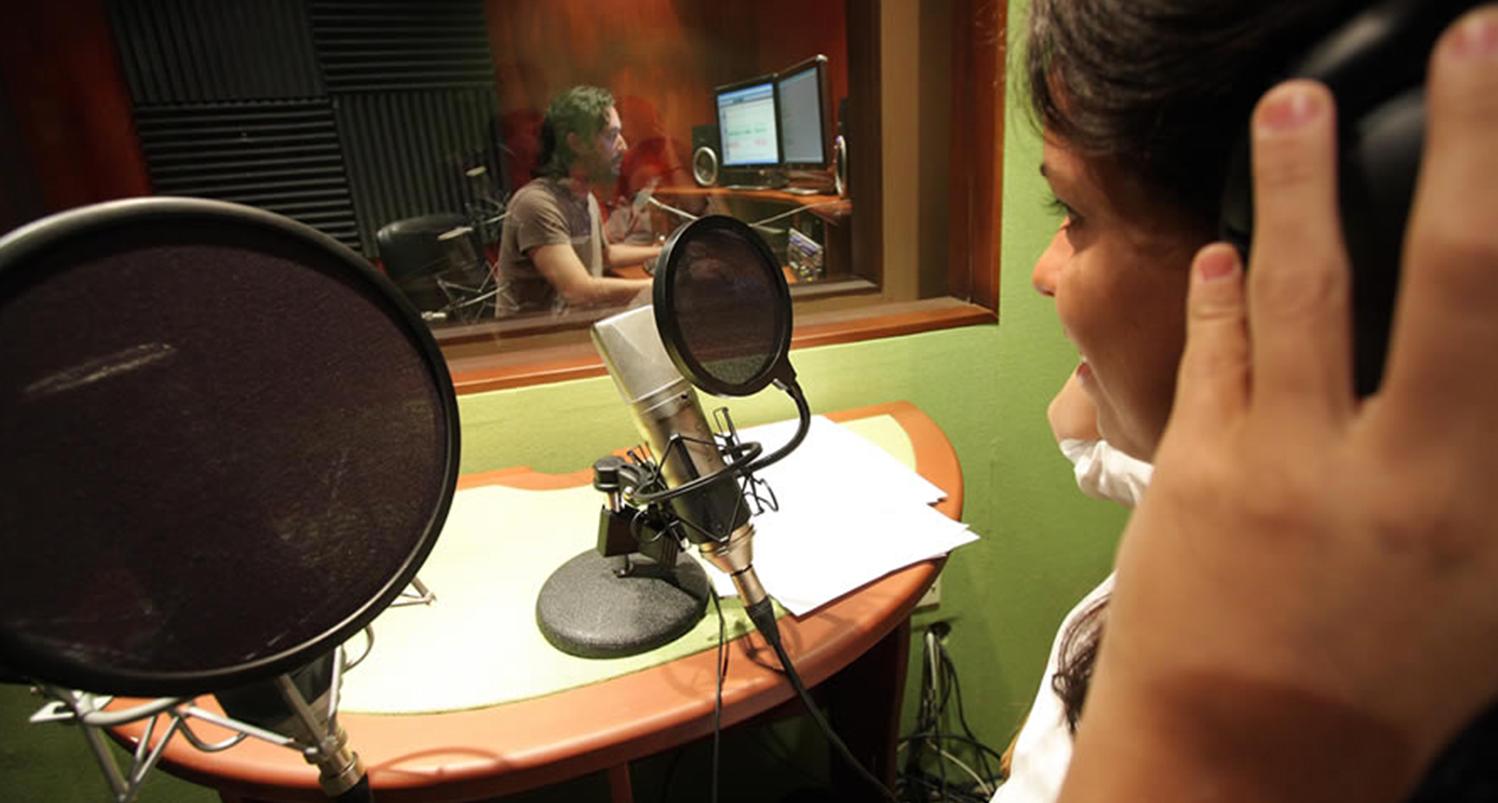
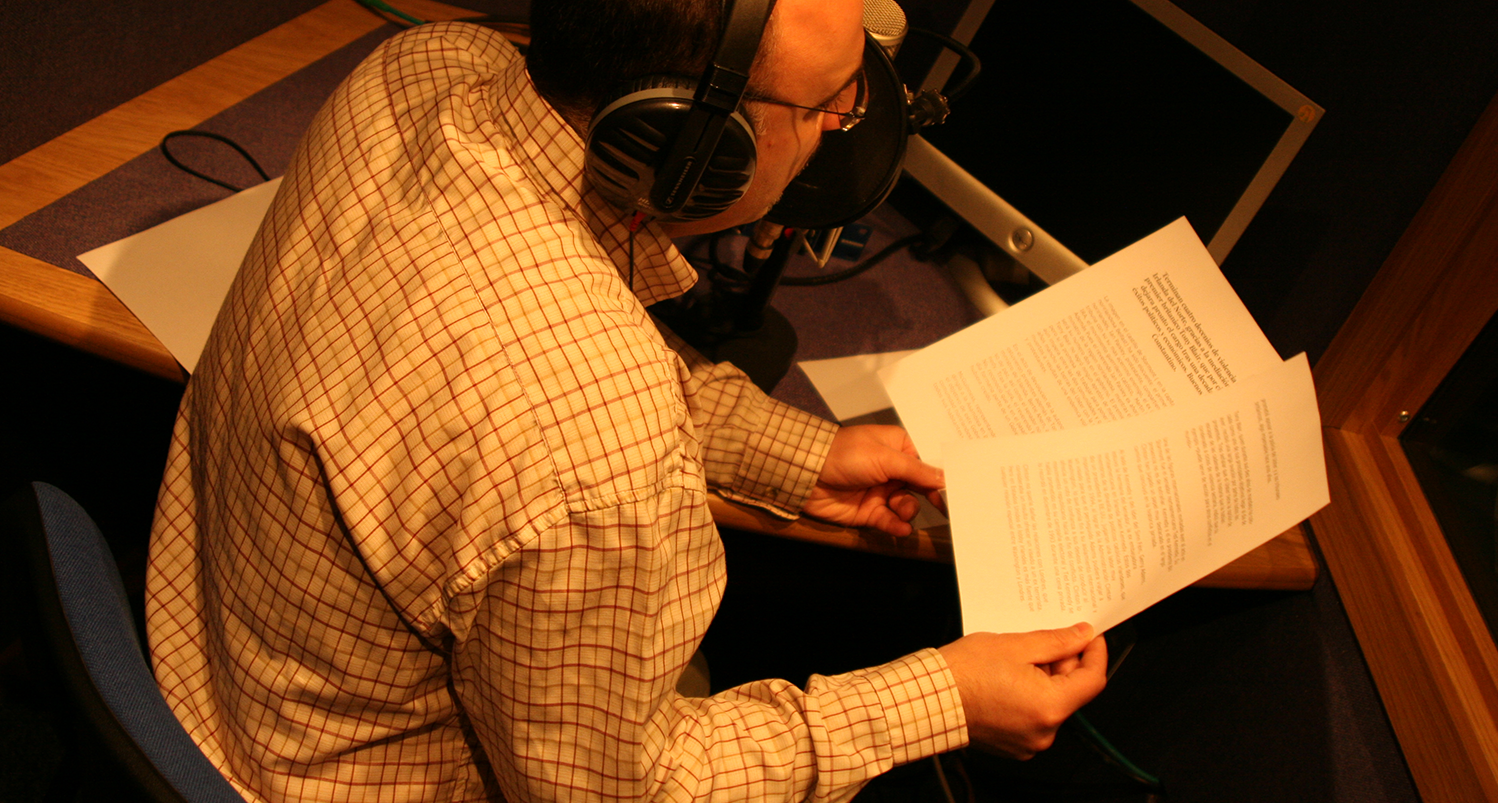
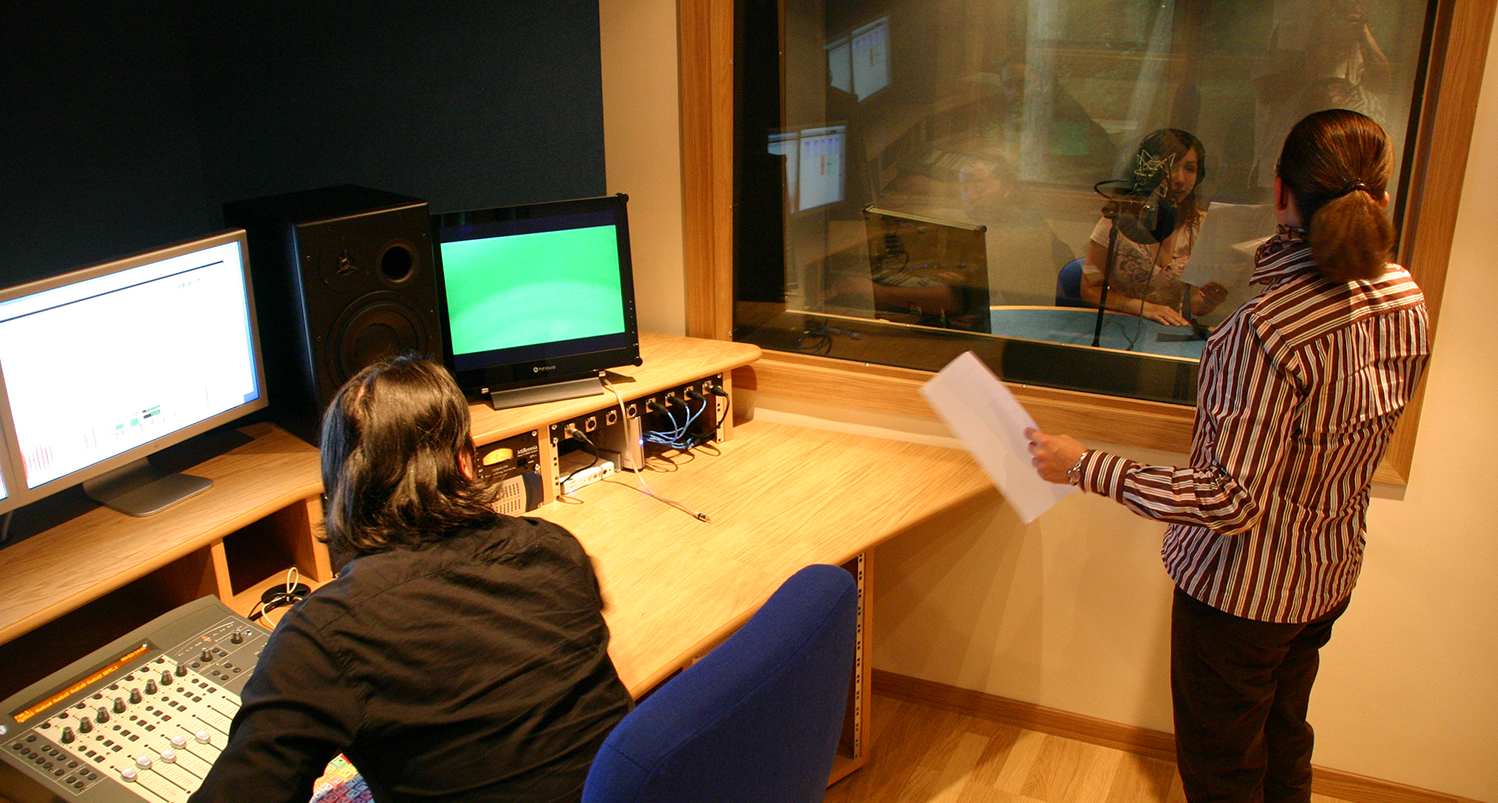
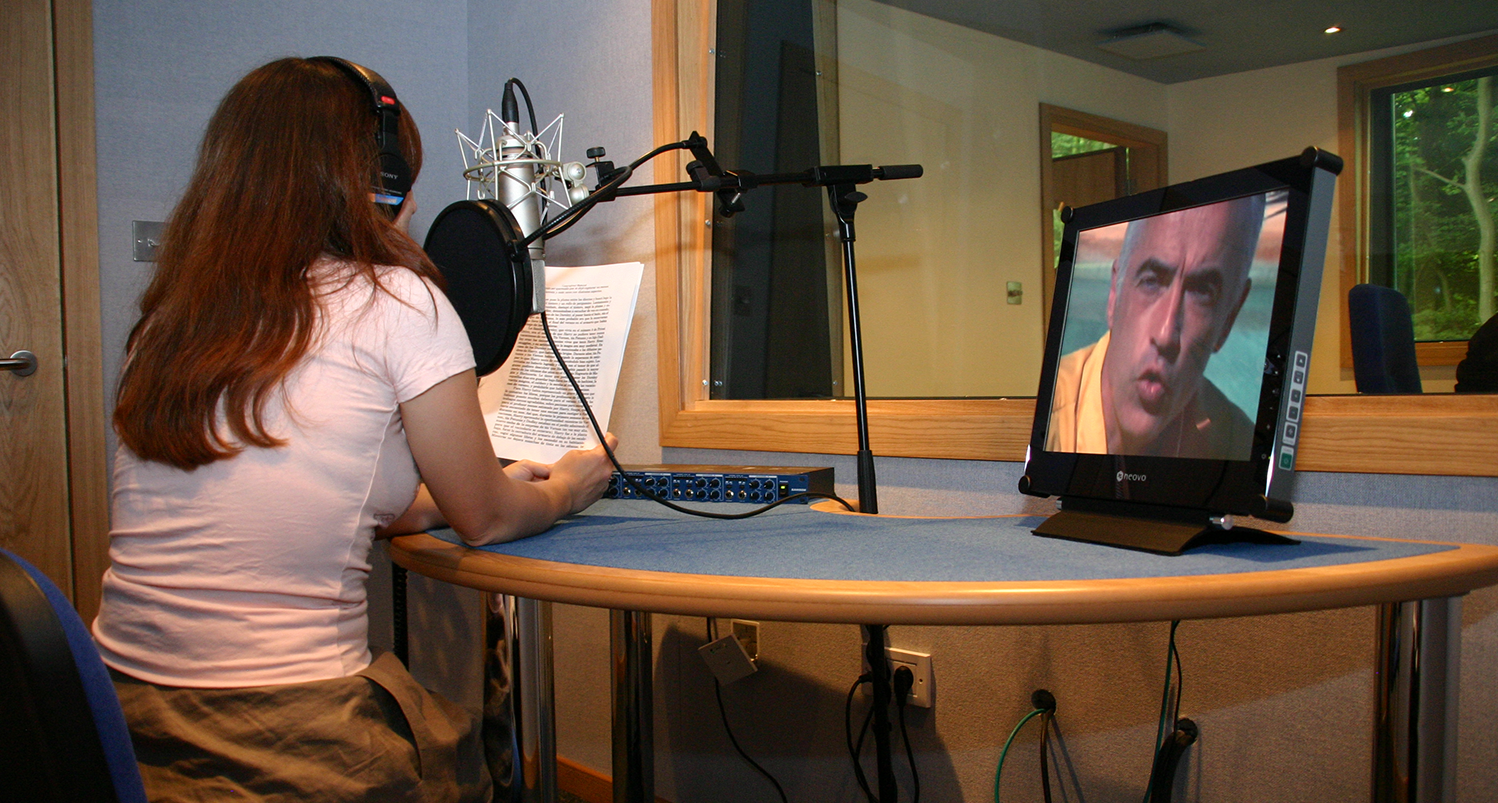
Control Rooms
Unique architecture especially created for the finest sound reproduction: insulated walls to eliminate any noise or rumble from outside, sound proof doors and windows, along with an irregular shape of the room and padded ceilings.
We use Pro Tools Flex (Ultimate and HD systems) with high-end Avalon and Millenia preamplifiers, as well as Neumann microphones to get the best warm sound from our voices.
Soundproof Booths
With a typical “room within a room” structure, our studios are surrounded by an empty chamber of 30 cm coupled with thick acoustic doors and special sealed windows. Damping materials within the walls, thick carpet on the floor, and padded tables absorb any reflecting noise to create a neutral sound and the perfect ambiance for voice recording.
Air ducts feed A/C to the interior through a series of buffers providing a non audible fresh air flow for the comfort of the voice talents inside the booth.
We record, clean, edit and encode audio for any platform or format.
We master audio applying any output specs:
TV Broadcast, Internet and Mobile.
Microphones:
- Neumann U87
- Neumann TLM 107
Monitors:
- Dynaudio BM 15a
- Focal SOLO6 BE
Peripherals:
- Millenia STT-1
- Avalon VT 737sp
- Avid HD Omni
Power computing:
- Mac Pro ®
- Dell ®
Software:
- Pro Tools HD Ultimate ®
- Sound Forge ®
- Adobe Creative Suite ®
Remote Recording
Using Skype or Source Connect we will connect you with your favourite voice talent here or anywhere in the world.
You will be able to direct the artist in real time and get the best tone and intention for your script. If the talent doesn’t speak your language, no worries, we will always get your message across to him with our multilingual staff. With distant recording we get 100% customer satisfaction and everybody involved enjoys a great working moment.
Frequently Asked Questions
Neumann U87 and TLM 103 are high-quality microphones used in the industry to capture warm, natural-sounding vocals.
The Dynaudio BM15A and Focal SOLO6 BE are excellent studio monitors that provide accurate and detailed sound reproduction.
The Millennia STT-1 and Avalon VT 737sp are high-end preamplifiers that can provide clean and transparent amplification of the microphone signal.
The Avid HD Omni is a professional-grade audio interface that allows for high-quality digital conversion and low-latency monitoring.
The Mac Pro and Dell computers are powerful machines capable of handling large audio projects.
Pro Tools Studio/Ultimate, Sound Forge, and Adobe Audition are all industry-standard software applications widely used in recording studios.
Overall, the above equipment will produce the best audio quality technology can offer. However, it’s important to note that the equipment is only one aspect of the recording process. Other factors such as the recording environment, microphone placement, and engineering skills are crucial for achieving high-quality recordings.
The equipment at Prime Group is widely used in high-end recording studios for top-quality sound and is ideal for professional-level audio and voice-over recording.
A good studio for recording voice-overs should have the following features:
Acoustics: The studio should have proper acoustic treatment to minimize external noises and reverberation. The room should have sound-absorbing panels or diffusers to control the reflection of sound waves.
Equipment: The studio should have high-quality microphones, preamps, and audio interfaces. These components ensure the recording is clear, crisp, and free from noise and interference.
Software: The studio should have audio recording software with advanced features like noise reduction, equalization, compression, and automation. This software enables the audio engineer to enhance the recording quality and remove unwanted sounds.
Monitoring: The studio should have good-quality monitoring speakers or headphones to ensure the recording is balanced and sounds good across different audio systems.
Environment: The studio should be located in a quiet area to minimize external noise pollution. It should also have proper climate control to ensure a comfortable recording experience for the talent.
Professionalism: The studio should have experienced audio engineers who can guide the talent and help them deliver the best performance. They should also be able to work efficiently and meet project deadlines.
Backup: The studio should have a backup system to prevent recorded audio loss due to technical failures.
Overall, a sound studio for recording voice-overs should be well-equipped, professionally managed, and designed to provide a comfortable and distraction-free environment for the talent. This is the case with Prime Group studios, offering the best quality thanks to the latest technology, acoustics, and professional staff.
A control room in a sound studio is a specialized workspace for recording and mixing audio. The following are some of the typical features of a control room:
Acoustics: A control room should have a well-treated acoustic environment that minimizes unwanted sound reflections and external noise. This is typically achieved through acoustic treatments such as sound-absorbing panels, diffusers, and bass traps.
Mixing desk: A mixing desk or console is the centerpiece of a control room. It allows the audio engineer to route and control audio signals, adjust levels, apply EQ and dynamics processing, and manage multiple audio channels.
Monitors: High-quality studio monitors are an essential part of a control room. They provide accurate and transparent sound reproduction, allowing the engineer to make informed mixing decisions.
Audio interfaces: Audio interfaces connect the mixing desk and the recording equipment, such as a computer or a digital audio workstation (DAW).
Computers and software: Modern control rooms typically use computers and software to manage the recording and mixing. The software can range from basic DAWs to more advanced software with plugins for processing and effects.
Headphones: Headphones are essential for monitoring and mixing audio, and are used by both the audio engineer and the talent during recording.
Storage: A control room typically has storage solutions for audio recordings and backups, such as hard drives or network-attached storage.
Lighting: Appropriate lighting is necessary for an optimal working environment in the control room.
Overall, a well-designed control room should provide a comfortable and distraction-free environment for audio engineers to produce high-quality audio recordings. The room should have the necessary tools and technologies to facilitate the recording and mixing. The acoustic environment should be optimized for accurate and transparent sound reproduction.
At Prime Voices, our voice-over studios’ control rooms are designed to produce high-quality audio recordings.
A recording booth in a sound studio is a specialized room providing a controlled acoustic audio recording environment. The following are some of the typical features of a recording booth:
Soundproofing: A recording booth is typically built with double walls, and doors and windows designed to prevent sound from leaking in or out. This soundproofing ensures that the recorded audio is free from external noise and interference
Acoustic treatment: The interior walls of a recording booth are typically treated with sound-absorbing materials, such as acoustic foam or fiberglass, to reduce sound reflections and ensure a clean and clear recording.
Lighting: Appropriate lighting is necessary for a comfortable and productive recording environment. The lighting should be adjustable to suit the preferences of the talent and recording engineers.
Microphones: A recording booth should have high-quality microphones to capture clear and accurate audio. The microphone may vary depending on the recording type, such as voice-over, music, or Foley sound effects.
Headphones: Headphones are essential for monitoring and recording audio, and are used by the talent to hear their voice and by the recording engineer to monitor the recording.
Audio interface: An audio interface connects the microphones and headphones in the recording booth to the mixing desk in the control room.
Furniture: Recording booths typically have a comfortable chair, a music stand, or similar equipment for holding scripts or sheet music.
Climate control: A recording booth should be well-ventilated and climate-controlled to ensure a comfortable recording environment for the talent.
Overall, a well-designed recording booth should provide a comfortable and distraction-free environment for the voice talent to record high-quality audio. The booth should be equipped with the necessary tools and technologies to facilitate the recording process, and the acoustic environment should be optimized for accurate and transparent sound reproduction.
At Prime Group, we understand that quality audio is the key to capturing great recordings. Our recording booths are equipped with the latest acoustic treatments and soundproofing technology. With a typical “room within a room” structure, damping materials in the walls, thick carpet on the floor, and padded tables, you can be sure of minimal background noise and a neutral sound ambiance. Air ducts feed A/C to the interior through a series of vents for even better insulation. So if you want to capture crystal clear audio, Prime Group’s recording booths will help you achieve it!
Several technical steps are typically followed when recording a voice-over in a studio to ensure high-quality audio recording. The following are some of the critical technical steps involved in recording a voice-over:
Microphone selection: Choosing the right microphone for the voice-over is essential to capturing high-quality audio. Different microphones have different characteristics, such as frequency response, sensitivity, and directionality, that affect the final sound. A good recording engineer will select a microphone that best suits the voice-over artist and the project’s requirements.
Microphone placement: Once the microphone is selected, the recording engineer will place it in the best position to capture the desired sound. The distance from the microphone, the angle and direction of placement, and other factors will all be considered to ensure the best sound possible.
Preamp selection and gain staging: A preamplifier is used to amplify the microphone signal before it is recorded. The recording engineer will select the appropriate preamp and set the gain to ensure the signal is strong enough without clipping or distortion.
Monitoring: The voice-over artist will wear headphones to monitor their voice, and the recording engineer will monitor the signal in the control room. This ensures that the recording levels and sound quality are consistent throughout the recording.
Recording software and hardware: The recording will typically be done using a digital audio workstation (DAW) such as Pro Tools, Logic Pro, or Reaper. The recording engineer will set up the software to record the voice-over at the desired sample rate and bit depth and ensure that the hardware (such as the audio interface and hard drive) is properly configured.
Post-production: After the recording, the audio file will be edited, mixed, and processed to create the final product. This may involve removing unwanted noise, adjusting levels and EQ, and adding effects such as compression, reverb, or delay.
Overall, the technical steps in recording a voice-over require a good understanding of audio engineering principles and the equipment and software used in recording studios. A skilled recording engineer can optimize these technical aspects to capture a high-quality recording that sounds professional and polished.
At Prime Group, we ensure that the audio production process is carried out seamlessly, from recording to cleaning, editing, monitoring, and formatting for any platform: TV Broadcast, Internet, and Mobile.
Remote recording of voice-overs has become increasingly popular in recent years due to technological advances and the ability to work with voice actors from anywhere in the world. Here are some ways that remote recording of voice-overs can take place:
Source-Connect: Source-Connect is a software-based solution that allows remote recording of voice-overs in real-time. The voice actor can connect to the recording studio via the internet and record the voice-over with the engineer listening in and providing feedback.
SessionLinkPRO: SessionLinkPRO is another software-based solution that allows remote recording of voice-overs in real-time. It uses a high-quality codec and provides low-latency, high-quality audio. The voice actor can connect to the recording studio via the internet and record the voice-over while the engineer listens and provides feedback.
Skype or Zoom: Skype or Zoom can also record voice-overs remotely. The voice actor can connect to the recording engineer via video conference and record the voice-over while the engineer listens and provides feedback. However, the quality may be lower than Source-Connect or SessionLinkPRO.
Self-recording: Another option is for the voice actor to record the voice-over in their home studio and then send the recording to the recording engineer for editing and mixing. This requires a high-quality microphone, a quiet recording environment, and basic knowledge of recording software.
No matter the method, clear communication between the voice actor and the recording engineer is crucial to ensure that the recording meets the desired quality and requirements.
Using Skype or Source Connect, we at Prime Group will connect you with your favorite voice talents from our studios or anywhere in the world. You can direct the artist in real-time and get the best sound for your script. That should be an issue if the actor does not speak your language. We will always communicate your message to him or her with our multilingual staff. We get 100% customer satisfaction with distant recording, and everybody involved enjoys an excellent working moment.
Hiring a voice-over talent to record in a studio typically involves the following steps:
Determine the type of voice-over you need: The first step is to determine the type of voice-over you need for your project. This could include a commercial, narration, explainer video, or animation voice-over. Knowing the type of voice-over you need will help narrow the potential talent pool.
Search for voice-over talent: Once you have a good idea of the type of voice-over you need, you can start searching for voice-over talent. There are several online marketplaces, such as Voices.com, Voice123, and Bodalgo, where you can browse profiles of voice-over talent and listen to their demos. You can also search for talent through social media platforms or industry organizations.
Review demos and select talent: After you have found some potential voice-over talent, you can review their demos to determine if their voice is a good fit for your project. Pay attention to tone, pace, and style to ensure the talent is a good match. Once you have narrowed down your list of potential talent, you can contact them to discuss the project and their availability.
Request quotes: Once you have identified the voice-over talent you want to work with, you can request a quote for their services. Be sure to provide details about the project, including the script’s length, the recording’s intended use, and any special requirements.
Schedule the recording session: Once you have agreed on a price and other details with the voice-over talent, you can schedule the recording session in the studio. Make sure to provide the talent with a copy of the script and any other relevant materials in advance.
Provide direction during the recording session: During the recording session, you or a director can provide direction to the voice-over talent to ensure they deliver the desired performance. It’s important to provide clear feedback and make adjustments as necessary to ensure the final recording meets your expectations.
Review and finalize the recording: After the recording session, the studio will typically provide you with a rough edit of the recording for review. You can provide feedback and request any necessary changes before the final recording is delivered in the desired format.
These are the basic steps in hiring a voice-over talent to record in a studio. It’s essential to research, listen to demos, and communicate clearly with the talent to ensure a successful recording session.